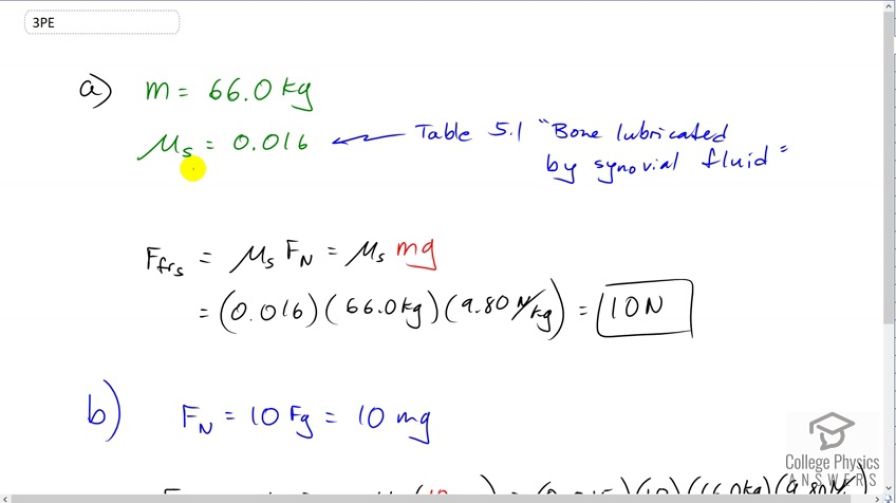a)
b)
Solution video
OpenStax College Physics, Chapter 5, Problem 3 (Problems & Exercises)

Calculator Screenshots
Comments
Awesome
I'm sort of confused on why the answer calls for the kinetic coefficient of friction for the joint. I thought the question called for the max force of friction during strenuous exercise a joint can take? when I think of max I think of the limit before the static friction in the joint becomes kinetic. and wouldn't kinetic friction in the joint mean that the joint is buckling? and doesn't kinetic friction have no limit since its proportional to the normal force that is applied, such as when the increasing weight on a squat.
Hi parm, good questions. Your point about static vs kinetic friction is a good one. Yes, maximum static friction is always bigger than maximum kinetic friction. The way I read this question is that exercise implies movement - so I interpreted the friction as being kinetic in part (b). However some exercise is static in that the exercise might involve holding a challenging position. It would not be wrong to use static friction in part (b) of this solution - it's a matter of interpretation of the question. Part (a) was clearly about static friction since it involves "support", whereas part (b) is about "exercise", whatever that means.
The normal force will be the force required to prevent the person's feet (or other point of contact with the ground) from moving through the ground. It will be limited to their weight when they're stationary. It will be a bit more than their weight when they jump or land but in this scenario it's still limited by the strength of their muscles.
Hope this helps,
Shaun



